John Hurrell – 30 November, 2017
‘Strangeness' is indeed the word. There is little lead-in here for the casual visitor, for this show—like any Bosch or Botticelli painting, or Beuys installation—is densely packed with esoteric symbolism. The wall label outside in the AAG landing is frankly inadequate in providing information. It is too general and short on specific details. Most artworld people (even those who fancy themselves as ‘insiders') will be baffled, unless they happened to attend Stevenson's talk.
Auckland
Michael Stevenson
Serene Velocity in Practice: MC510/CS183
Curated by Natasha Conland
12 November 2017 - 6 February 2017
This Michael Stevenson show at CAG has a lot in common with the current Simon Denny show at Lett, apart from involving the same dealer. They’re both called research based practices by their creators, though very few artists today are not that anyway. The term (generally) implies a hierarchical positioning of structuring idea over visual allure, and that that idea is not obvious at the start of research, which begins with a faint glimmer of curiosity, and which becomes apparent gradually though the process of investigation.
They also both feature binary pairings—in Denny’s case; Thiel versus Harris; in Stevenson‘s, Thiel’s university course (yes, that same Thiel) versus the university course of John Wimber, a massively successful charismatic evangelist and faith-healer. The two Californian universities are Stanford and Fuller. The strangeness of these courses (founded thirty years apart) being included as part of American academic higher learning is Stevenson’s point. He presents two rectangular classrooms, linked by an archway-covered walkway. An immersive installation Auckland visitors can wander in and out of.
‘Strangeness’ is indeed the word. There is little lead-in here for the casual visitor, for this show—like any Bosch or Botticelli painting, or Beuys installation—is densely packed with esoteric symbolism. The wall label outside in the AAG landing is frankly inadequate in providing information. It is too general and short on specific details. Most artworld people (even those who fancy themselves as ‘insiders’) will be baffled, unless they happened to attend Stevenson’s talk. Chances are, however, they will also be intrigued; it is a visually rich concoction. But with an incommunicative solipsistic feel.
Stevenson‘s project is an examination of proselytising, using information gleaned from the two courses he took, where he eventually discovered resonating symbols motivated by either the drive for profitable entrepreneurship or evangelical preoccupation with a coming war. The latter seems partially the result of his Inglewood upbringing, and his earlier fascination with small town churches.
The linking of the two spaces is through a bland university seventies-style path that references the corridors of Serene Velocity, a minimalist avant-garde film by Ernie Gehr. This 1970 film Stevenson saw as a student while taking a course by Roger Horrocks. The short experimental movie suggests a slow compression, a sort of advance then retreat then advance again, a gradual bringing together through an ‘evangelical’ commonality.
The first room you encounter is MC510, MC standing for Mission Class. It was held at Fuller Theological Seminary in Pasadena, the course a branch of the Vineyard Mission set up by Wimber, and incidentally, the church Bob Dylan joined in the early eighties. Stevenson’s constructed ‘pedagogical space’ is abundant in symbols for the Holy Spirit. Pneumatic aircraft tyres are especially ubiquitous, supporting the walls in the corners or encasing the students’ chairs and desks. Pneuma is another term for Holy Spirit. The believer’s ‘Leap of Faith’ is referenced by coiled Bungy Jumping cords, and the classroom walls are made of forty small airline-branded blankets, stitched together to form an enclosing grid that suggests a heavenly realm.
One tyre serves as a container for a group of Samurai swords, and another becomes a wishing well on which rests a book called From Worship to Warfare. The scribbled notes on the blackboard talk about the present age versus the age to come, evoking ‘The Power’ and counterattacking the ‘Kingdom of Darkness’. (Bob Dylan’s intolerant—at times racist—album Infidels (1983) makes more sense in this context.) Amongst the seminars on the blackboard is listed ‘Demon Expulsion.’
The other room is CS183, CS standing for Computer Science. ‘Thiel’s‘ space is dark, claustrophobic and somewhat subterranean, the floor and walls lined with the finned aluminium panelling (painted black) that is used to keep hard-drives cool. The walls have anti-pigeon spikes on their upper edge (‘Don’t sit on the fence’ being the possible message here), while two of five gridded solar panels (labelled ‘Heritage Global Partners’ - an Asset Advisory and Auction Service) present strategy techniques using quail eggs as counters.
On this classroom’s blackboard, we see a list of seven reasons why entrepreneurial projects can fail (according to Thiel): engineering; timing; monopoly; people; distribution; durability; secrets.
The last reason catches your eye. The two student chairs on castors here have no encircling grey rubber tyres. Instead they have black textured manhole covers, suggesting underground activity, exploiting secrecy. Their densely patterned detail makes them look like fetish objects.
One is sitting next to a roller table on which rests a partially shredded Hulk Hogan Python Power Bandana. The positioning and treatment of the famous wrestler’s bandana suggests a reference to Thiel’s secret (now revealed) funding of Hogan’s multi-million dollar lawsuit against Gawker Media for posting parts of a sex tape. Because there was considerable alarm at the size of the damages which Hogan then won last year, and which crippled Gawker, Thiel’s furtive funding was seen by some as destroying the freedom of the press; Stevenson seems to be referencing the exposure of Thiel’s intervention.
Comparing Stevenson with the younger Denny, my feeling is that overall Stevenson has a certain amount of intuitive or poetic (even ad hoc) inclination in his work that Denny would probably avoid, being in his case more rigorous, or shall we say, more apt to be tightly adhering to a biographical narrative. However such a perception of ‘looseness’ might be mistaken, as more of Stevenson’s conceptual underpinnings and tropes in this work may yet become apparent when it is presented in next year’s Sydney Biennale. It’s early days yet.
John Hurrell
Recent Comments
Martin Rumsby
Would be nice if someone involved in this would acknowledge that Serene Velocity is the name of a famous American ...
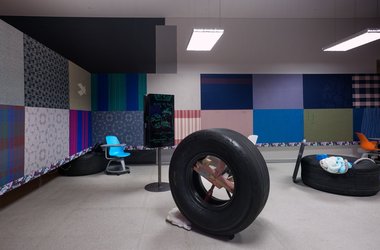
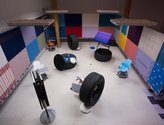
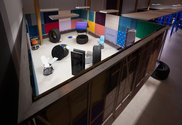
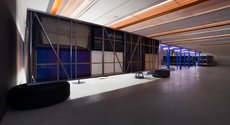
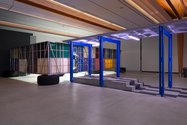



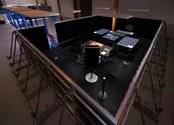
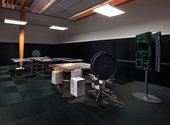


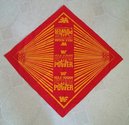
 Advertising in this column
Advertising in this column Two Rooms presents a program of residencies and projects
Two Rooms presents a program of residencies and projects



This Discussion has 1 comment.
Comment
Martin Rumsby, 12:30 p.m. 4 December, 2017 #
Would be nice if someone involved in this would acknowledge that Serene Velocity is the name of a famous American avant-garde film by Ernie Gehr which was actually shown widely throughout NZ c1984 under the auspices of Roger Horrocks in Auckland, Russell Campbell in Wellington and Alternative Cinema throughout much of the rest of the country. (Thanks so much to the Embassy of the USA for facilitating this). Indeed, Gehhr's Serene Velocity, widely regarded as a cinematic masterpiece, adresses some of the issues mentioned here although it arises from an entirely different mindset (certainly not art as research outcome). Though it may be possible to find a facsimile of Serene Velocity on the internet the work is so cinema-specific that it does not translate very well into electronic or digital media. Best seen and maybe only fully comprehensible as 16mm film.
Participate
Register to Participate.
Sign in
Sign in to an existing account.